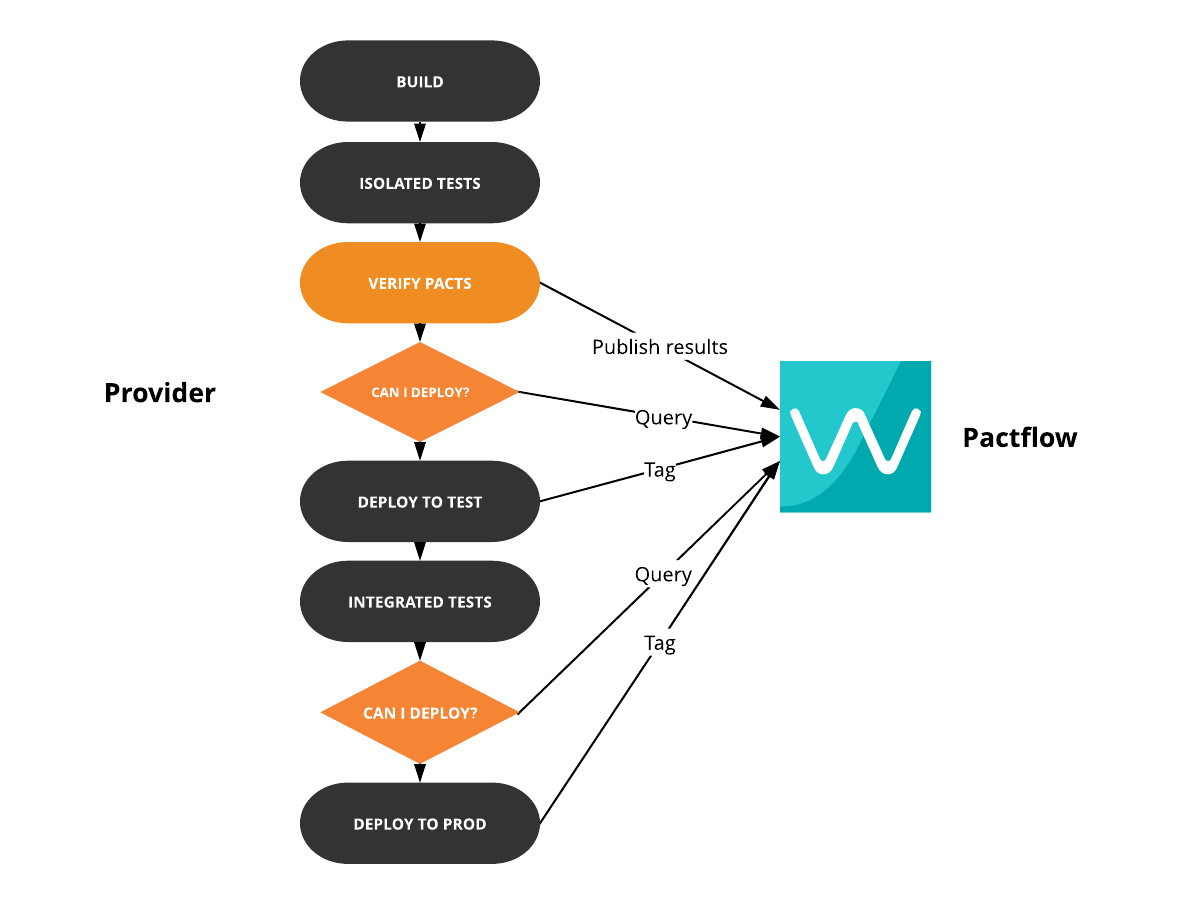4. Silver - manually integrate with Pact Broker
Now you have two different sets of tests in two different codebases. The artifacts that tie these tests together are the Pact file, and the verification results. The next step is to automate the exchange of these artifacts. At this level, you still run on your machine, but you have the consumer test publish its pact to the Pact Broker, and manually run provider verification where it gets the latest pact from the broker.
Silver diagram

The Pact Broker is a service that allows your projects to exchange pacts and verification results in an automated way.
While you can use Pact without a Pact Broker, using one allows you to get the most out of Pact. Without the Broker, you will have to work out how to create your own feedback loop that lets you know the results of the pact verifications, and your pacts will not enable to you release your services independently and safely using the can-i-deploy tool (more on this later).
Quick Start
The Pact Broker is an open source tool that requires you to deploy, administer and host it yourself. If you would prefer a plug-and-play option, we've created Pactflow, a fully managed Pact Broker with additional features to simplify teams getting started and scaling with Pact.
Get started for free on our Developer Plan here.
Verifying pacts
There are two reasons that a verification task will need to be run:
- When the provider code changes
- The verification task will run as part of the normal CI/CD pipeline for the provider
- The verification task will fetch and verify all the relevant pacts from all consumers from the Pact Broker to ensure no regressions have occurred.
- When the pact changes
- We recommend that a separate pipeline is set up to verify just the changed pact (more details on this later in the guide).
Consumer pipeline
The following diagram shows what a fully fledged Pact supported release pipeline might look like for a consumer. During this step of the set up guide, we are just going to cover publishing the pact. The other parts of this pipeline will be covered in later steps.
Consumer release pipeline

Provider pipeline
The following diagram shows what a fully fledged Pact supported release pipeline might look like for a provider. During this step of the set up guide, we are just going to cover the pact verification and results publication. The other parts of this pipeline will be covered in later steps.
Provider release pipeline

Tasks
A. Set up a Pact Broker
- Read the Pact Broker home page, (taking note of the various deployment options available to you in the Usage section), or sign up to a hosted Developer plan at Pactflow.
- Deploy a Pact Broker to a network that has access to both consumer and provider CI systems so it can trigger builds.
Useful links:
For each of the next steps, you will need to set the following variables to your projects
PACT_BROKER_BASE_URLPACT_BROKER_USERNAME# Pact Broker OnlyPACT_BROKER_PASSWORD# Pact Broker OnlyPACT_BROKER_TOKEN# Pactflow Broker Only
B. Manually publish the pact to the Pact Broker
Now that things in are a fairly stable state, you can start taking advantage of the Pact Broker to manage the communication between your provider and consumer.
- See the recommended configuration for publishing https://docs.pact.io/consumer/recommended_configuration
- Use one of our Pact CLI tools
You can read more about publishing and retrieving pacts from a Pact Broker here
If you are using Pactflow - see https://docs.pactflow.io/#consumer for how to configure your consumer in each respective language implementation
Debug this until it works and looks good.
C. Manually verify using the Pact Broker
Now you can see if you can run your provider tests, this time pulling the pact file not from your local filesystem, but from the broker. Reconfigure your provider project to get the latest pact for each of its consumers from the broker.
If you are using Pactflow - see https://docs.pactflow.io/#provider for how to configure your provider in each respective language implementation